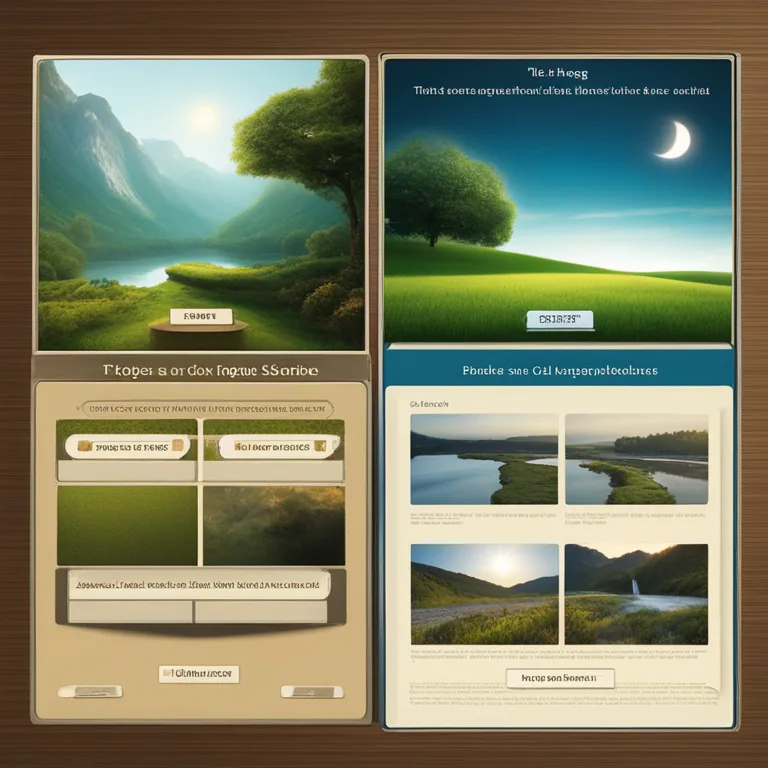
Path to Mindfulness Meditation: A Simple Guide
Embark on a journey to inner peace with our step-by-step guide to mindfulness meditation, perfect for modern seekers of tranquility.
article by Hina Kurosawa
Introduction to Mindfulness
Mindfulness meditation has risen in prominence as a powerful practice to foster awareness and reduce stress. In a world where the pace of life accelerates each year, carving out time for mindfulness can ground us in the present moment. This ancient technique, now backed by modern science, offers a path to inner calm and heightened focus. A consistent meditation regimen can improve mental clarity and emotional resilience, equipping us to handle life's challenges with grace.

Creating Conducive Space
Begin by arranging a quiet space where you can meditate without interruptions. Consider the ambience—subtle scents, soft lighting, and a comfortable seat can enhance your experience. Your meditation area doesn't need to be large; a small, dedicated corner can serve as a personal sanctuary for your daily practice.

Adopting a Comfortable Posture
Your physical comfort is crucial in mindfulness meditation. Find a seated position that allows your back to be straight yet relaxed. Whether it's a cushion, chair or mat, what matters is that you can maintain your position without discomfort for the duration of the practice. Closing your eyes during meditation minimizes distractions and helps turn your focus inward.

Understanding Breath Awareness
Conscious breathing is the essence of mindfulness meditation. Focus on the natural rhythm of your breath, observing each inhalation and exhalation. When your mind wanders—and it will—gently bring your attention back to your breathing. This practice is not about stopping thoughts but about noticing them without judgment and returning to the breath.

Embracing Silence and Stillness
In our digitally-driven world, silence can be scarce. Mindfulness allows you to appreciate periods of stillness. As you meditate, embrace the quietness around you. Let it seep into your consciousness, creating a sense of peace. Silence in meditation serves as a canvas, allowing you to witness the thoughts and sensations that arise.
Incorporating Mindful Observation
Aside from breath awareness, mindfulness meditation includes observing thoughts, feelings, and physical sensations without attachment. Recognize each experience as it appears but refrain from labeling it as good or bad. This non-judgmental observation can lead to profound insights about the nature of your mind and the impermanence of experiences.
Setting a Sustainable Routine
For mindfulness meditation to yield benefits, consistency is key. Start with shorter sessions, perhaps five to ten minutes, and gradually extend your practice time. Choose a particular time of day to integrate meditation into your routine, making it as habitual as brushing your teeth. With time, you may find that meditation becomes an indispensable part of your daily life.
Cultivating Patience and Commitment
The journey to mindfulness is seldom a straight path—it requires patience, commitment, and self-compassion. Approach each session without expectations and be kind to yourself when challenges arise. Over time, the cumulative effect of regular practice can lead to a transformed mind and a more serene approach to life.
Published: 1/8/2024
Modified: 1/8/2024
More predictions
Come back here soon to learn more about yourself and your future


The Harmony of Mindful Breathing in Meditation
Delve into the symbiotic relationship between meditation, mindfulness, and breathwork to achieve inner peace and clarity.


Mindfulness Meditation Benefits for High Schoolers
Discover how mindfulness meditation can help high school students navigate academic pressure, enhance focus, and improve overall wellbeing.


Harmonizing Life: Meditation, Mindfulness & Balance
Discover the intertwining paths of meditation and mindfulness for achieving a balanced life in this insightful article.